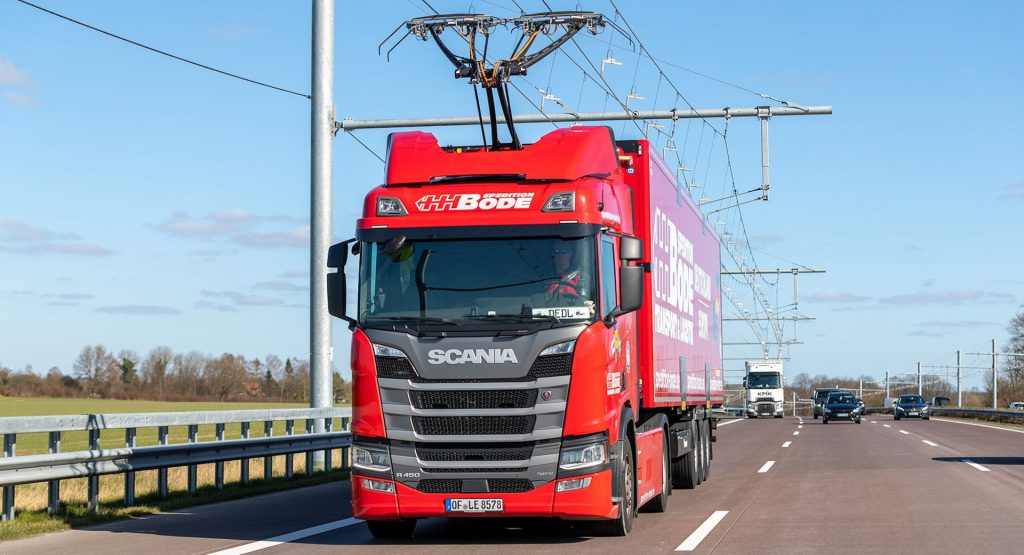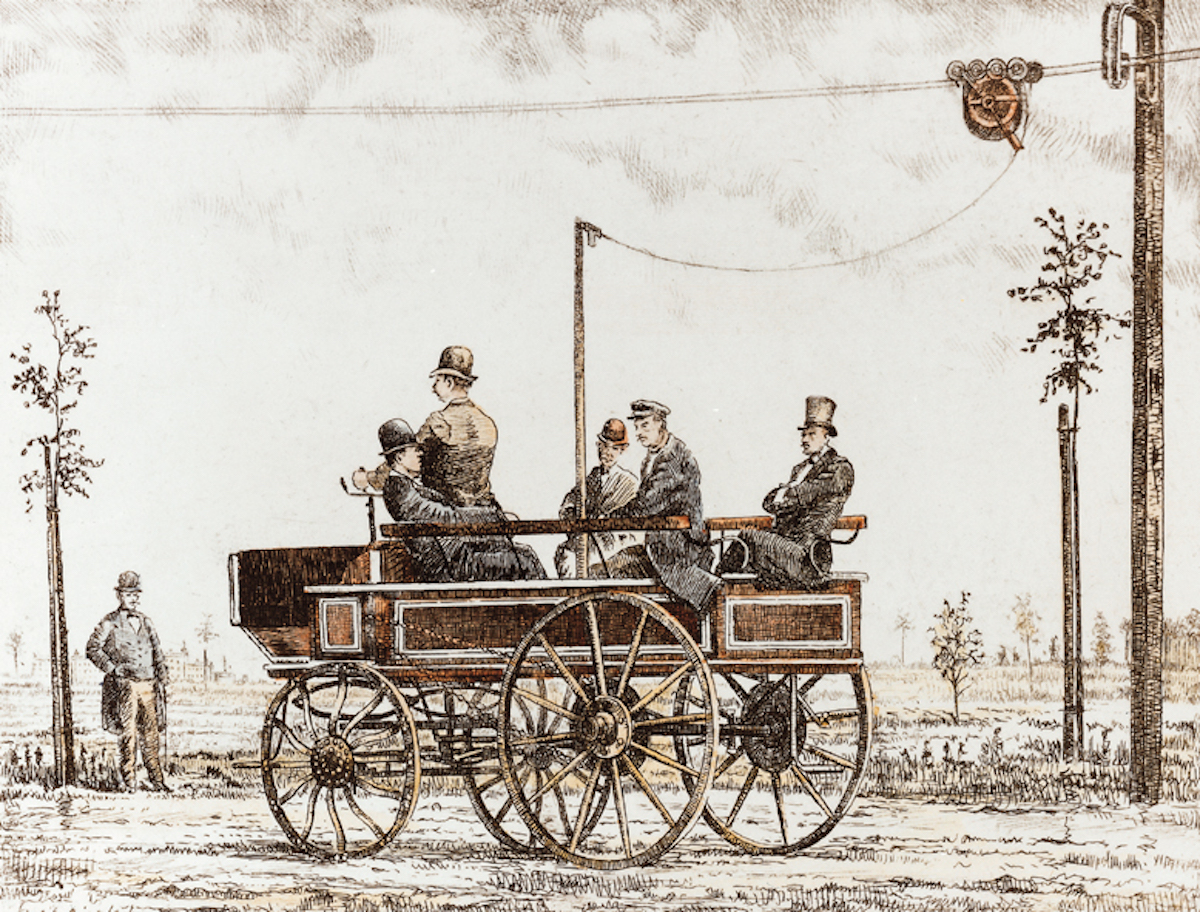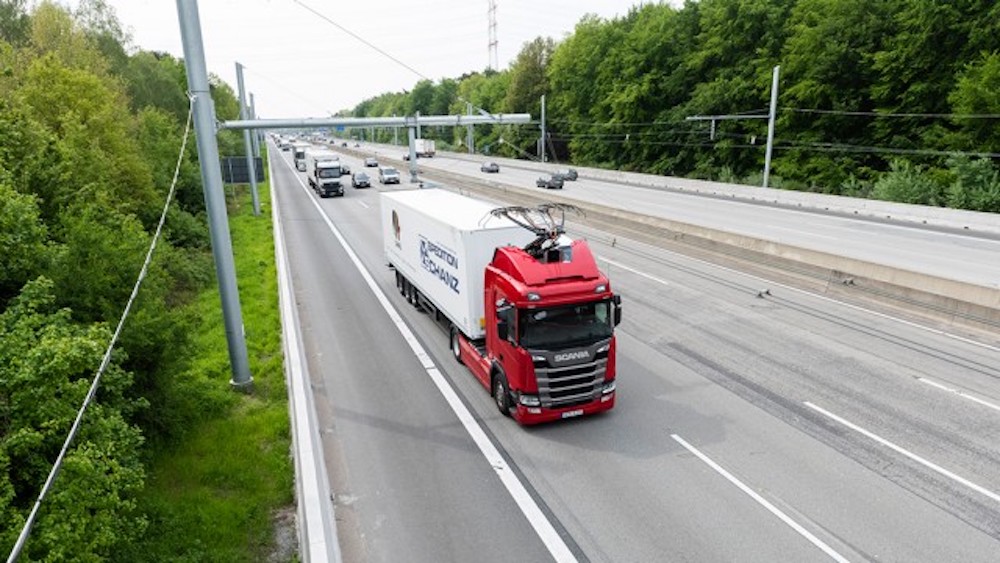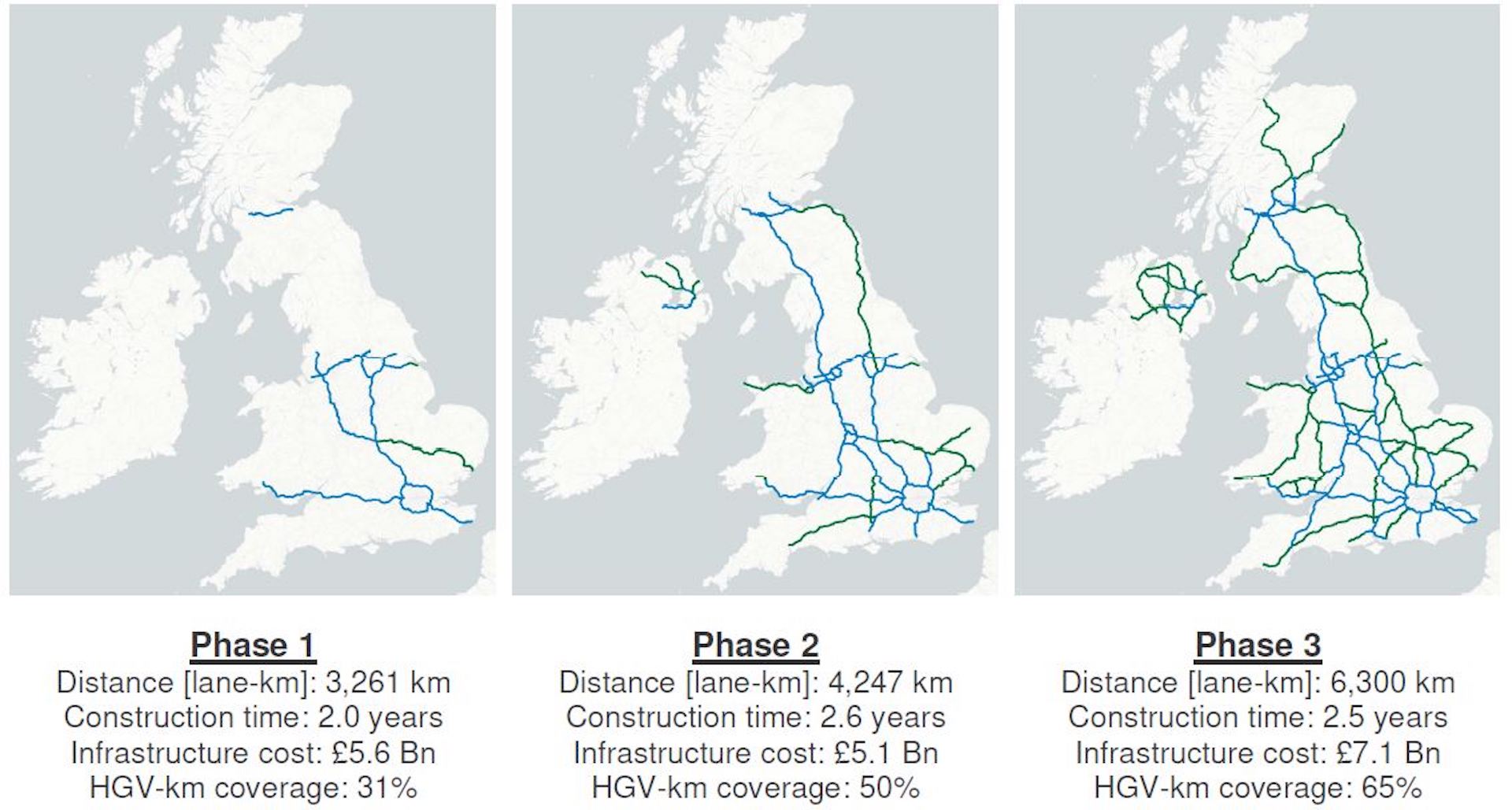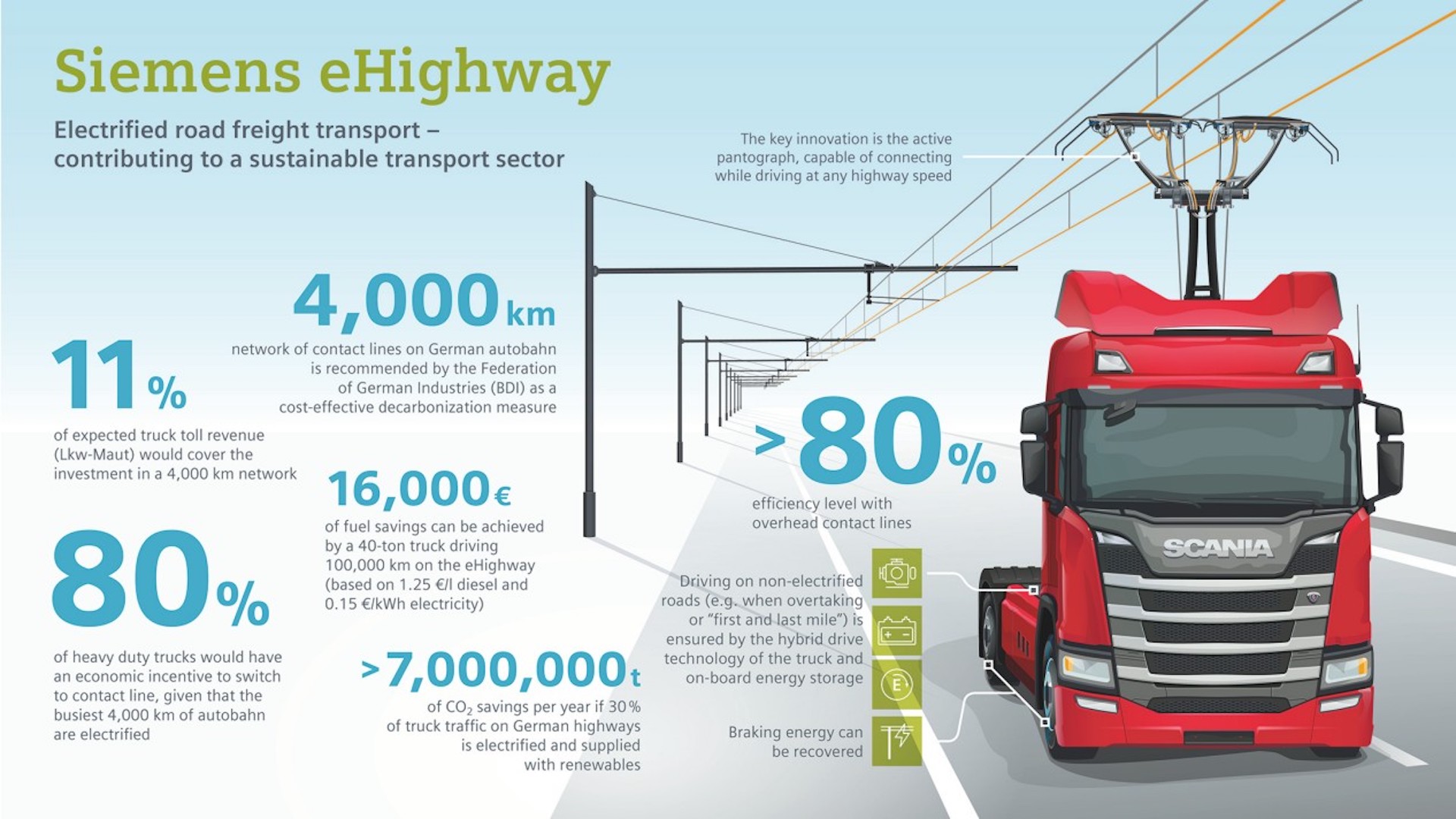Mercedes recently revealed its eActros electric truck, and Tesla’s electric Semi is currently in development, albeit delayed until 2022.
But not everyone is convinced that electrifying heavy goods vehicles in the same way we’re electrifying cars is the right move and the British government has just announced it will fund the installation of tram-style overhead electric cables on a 12.4-mile (20 km) stretch of M180 motorway near Scunthorpe.
The £2 million ($2.8 m) e-highway program is a pilot scheme to see if it’s worth rolling out the technology across the rest of the UK’s motorway network in time for the UK’s 2040 ban on ICE good vehicles (ICE cars get the chop in 2030). It will run in parallel with similar studies investigating the viability of hydrogen power and conventional battery-power.
The plan involves outfitting trucks from Sweden’s Scania with electric technology created by Siemens in Germany. Both Germany and Sweden have already operated small trials, along with the U.S., which trialled a one-mile section of road in Carson, California.
Related: Daimler, Volvo, and Traton Team Up To Create $592 Million Truck Charging Network In Europe
Much like the trolleybuses that became popular around the world during the early 20th century, and are still visible in cities like Vancouver and Sao Paulo today, the trucks draw current from their overhead cables when they make contact with a spring-loaded pole, or pantograph, on the vehicle’s roof.
This means the trucks can be fitted with smaller batteries, which would only be required to carry them to their final destination from the end of the e-highway. It might also speed up delivery times versus a battery-powered truck because there is no need to stop and charge mid-route.
An academic study suggested the e-highway system covering all but the most remote parts of the UK could be completed by 2030 at a cost of £19 billion (£26.4 bn), money the government thinks could be recovered in 15 years through taxes on the electricity consumed.
Haulage companies should find the lower cost of the trucks appealing, but is it just us or does this kind of technology seem pretty low tech given that people were riding around in vehicles connected to ugly overhead wires way back in 1882?








